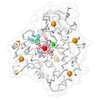[English] 日本語
 Yorodumi
Yorodumi- PDB-5fvo: Structure of rat neuronal nitric oxide synthase heme domain in co... -
+ Open data
Open data
- Basic information
Basic information
| Entry | Database: PDB / ID: 5fvo | ||||||
|---|---|---|---|---|---|---|---|
| Title | Structure of rat neuronal nitric oxide synthase heme domain in complex with 6-(2-(5-(3-methoxypropylamino)pyridin-3-yl)ethyl)-4- methylpyridin-2-amine | ||||||
 Components Components | NITRIC OXIDE SYNTHASE, BRAIN | ||||||
 Keywords Keywords | OXIDOREDUCTASE / NITRIC OXIDE SYNTHASE / INHIBITOR COMPLEX | ||||||
| Function / homology |  Function and homology information Function and homology informationnegative regulation of hepatic stellate cell contraction / Nitric oxide stimulates guanylate cyclase / positive regulation of adenylate cyclase-activating adrenergic receptor signaling pathway / negative regulation of iron ion transmembrane transport / response to vitamin B3 / postsynaptic specialization, intracellular component / ROS and RNS production in phagocytes / azurophil granule / Ion homeostasis / synaptic signaling by nitric oxide ...negative regulation of hepatic stellate cell contraction / Nitric oxide stimulates guanylate cyclase / positive regulation of adenylate cyclase-activating adrenergic receptor signaling pathway / negative regulation of iron ion transmembrane transport / response to vitamin B3 / postsynaptic specialization, intracellular component / ROS and RNS production in phagocytes / azurophil granule / Ion homeostasis / synaptic signaling by nitric oxide / negative regulation of vasoconstriction / response to nitric oxide / positive regulation of adenylate cyclase-activating G protein-coupled receptor signaling pathway / response to vitamin E / negative regulation of cytosolic calcium ion concentration / positive regulation of sodium ion transmembrane transport / peptidyl-cysteine S-nitrosylase activity / positive regulation of the force of heart contraction / cadmium ion binding / negative regulation of calcium ion transport / negative regulation of potassium ion transport / regulation of postsynaptic membrane potential / nitric oxide mediated signal transduction / sodium channel regulator activity / nitric-oxide synthase (NADPH) / regulation of neurogenesis / negative regulation of serotonin uptake / nitric-oxide synthase activity / xenobiotic catabolic process / multicellular organismal response to stress / L-arginine catabolic process / NADPH binding / postsynaptic density, intracellular component / striated muscle contraction / nitric oxide-cGMP-mediated signaling / negative regulation of blood pressure / regulation of sodium ion transport / response to hormone / behavioral response to cocaine / nitric oxide metabolic process / nitric oxide biosynthetic process / photoreceptor inner segment / cellular response to epinephrine stimulus / T-tubule / sarcoplasmic reticulum membrane / secretory granule / calyx of Held / sarcoplasmic reticulum / positive regulation of long-term synaptic potentiation / response to activity / cell periphery / response to nicotine / response to nutrient levels / phosphoprotein binding / establishment of protein localization / establishment of localization in cell / female pregnancy / cellular response to mechanical stimulus / negative regulation of insulin secretion / sarcolemma / response to peptide hormone / caveola / potassium ion transport / response to lead ion / cellular response to growth factor stimulus / response to estrogen / vasodilation / Z disc / calcium-dependent protein binding / calcium ion transport / FMN binding / NADP binding / flavin adenine dinucleotide binding / positive regulation of neuron apoptotic process / ATPase binding / response to heat / scaffold protein binding / response to ethanol / nuclear membrane / response to lipopolysaccharide / dendritic spine / negative regulation of neuron apoptotic process / RNA polymerase II-specific DNA-binding transcription factor binding / transmembrane transporter binding / response to hypoxia / mitochondrial outer membrane / cytoskeleton / calmodulin binding / postsynaptic density / membrane raft / negative regulation of cell population proliferation / heme binding / synapse / dendrite / negative regulation of apoptotic process / positive regulation of DNA-templated transcription / perinuclear region of cytoplasm / glutamatergic synapse / enzyme binding / positive regulation of transcription by RNA polymerase II Similarity search - Function | ||||||
| Biological species |  | ||||||
| Method |  X-RAY DIFFRACTION / X-RAY DIFFRACTION /  SYNCHROTRON / OTHER / Resolution: 2.12 Å SYNCHROTRON / OTHER / Resolution: 2.12 Å | ||||||
| Model type details | P ATOMS ONLY, CHAIN B | ||||||
 Authors Authors | Li, H. / Poulos, T.L. | ||||||
 Citation Citation |  Journal: J.Med.Chem. / Year: 2016 Journal: J.Med.Chem. / Year: 2016Title: Potent and Selective Human Neuronal Nitric Oxide Synthase Inhibition by Optimization of the 2-Aminopyridine-Based Scaffold with a Pyridine Linker. Authors: Wang, H. / Qin, Y. / Li, H. / Roman, L.J. / Martasek, P. / Poulos, T.L. / Silverman, R.B. | ||||||
| History |
|
- Structure visualization
Structure visualization
| Structure viewer | Molecule:  Molmil Molmil Jmol/JSmol Jmol/JSmol |
|---|
- Downloads & links
Downloads & links
- Download
Download
| PDBx/mmCIF format |  5fvo.cif.gz 5fvo.cif.gz | 192.9 KB | Display |  PDBx/mmCIF format PDBx/mmCIF format |
|---|---|---|---|---|
| PDB format |  pdb5fvo.ent.gz pdb5fvo.ent.gz | 153.5 KB | Display |  PDB format PDB format |
| PDBx/mmJSON format |  5fvo.json.gz 5fvo.json.gz | Tree view |  PDBx/mmJSON format PDBx/mmJSON format | |
| Others |  Other downloads Other downloads |
-Validation report
| Summary document |  5fvo_validation.pdf.gz 5fvo_validation.pdf.gz | 1 MB | Display |  wwPDB validaton report wwPDB validaton report |
|---|---|---|---|---|
| Full document |  5fvo_full_validation.pdf.gz 5fvo_full_validation.pdf.gz | 1 MB | Display | |
| Data in XML |  5fvo_validation.xml.gz 5fvo_validation.xml.gz | 18.3 KB | Display | |
| Data in CIF |  5fvo_validation.cif.gz 5fvo_validation.cif.gz | 24.8 KB | Display | |
| Arichive directory |  https://data.pdbj.org/pub/pdb/validation_reports/fv/5fvo https://data.pdbj.org/pub/pdb/validation_reports/fv/5fvo ftp://data.pdbj.org/pub/pdb/validation_reports/fv/5fvo ftp://data.pdbj.org/pub/pdb/validation_reports/fv/5fvo | HTTPS FTP |
-Related structure data
| Related structure data | 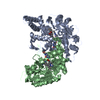 5fvpC 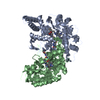 5fvqC 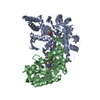 5fvrC 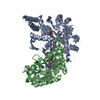 5fvsC 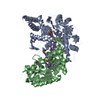 5fvtC 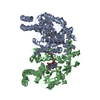 5fvuC 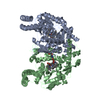 5fvvC 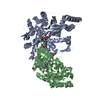 5fvwC 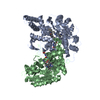 5fvxC 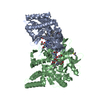 5fvyC 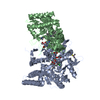 5fvzC 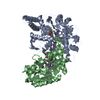 5fw0C C: citing same article ( |
|---|---|
| Similar structure data |
- Links
Links
- Assembly
Assembly
| Deposited unit | 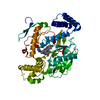
| |||||||||
|---|---|---|---|---|---|---|---|---|---|---|
| 1 |
| |||||||||
| Unit cell |
| |||||||||
| Components on special symmetry positions |
|
- Components
Components
-Protein , 1 types, 1 molecules A
| #1: Protein | Mass: 48812.527 Da / Num. of mol.: 1 Source method: isolated from a genetically manipulated source Source: (gene. exp.)   |
|---|
-Non-polymers , 5 types, 80 molecules 
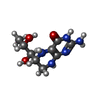







| #2: Chemical | ChemComp-HEM / |
|---|---|
| #3: Chemical | ChemComp-H4B / |
| #4: Chemical | ChemComp-D8H / |
| #5: Chemical | ChemComp-ZN / |
| #6: Water | ChemComp-HOH / |
-Experimental details
-Experiment
| Experiment | Method:  X-RAY DIFFRACTION / Number of used crystals: 1 X-RAY DIFFRACTION / Number of used crystals: 1 |
|---|
- Sample preparation
Sample preparation
| Crystal | Density Matthews: 2.48 Å3/Da / Density % sol: 50.4 % Description: OVERALL RMERGE 0.110 RPIM 0.088 CC ONE HALF 0.998 HIGHEST RESOLUTION SHELL RMERGE 1.618 RPIM 1.292 CC ONE HALF 0.510 |
|---|---|
| Crystal grow | pH: 5.8 Details: 20-24% PEG3350, 0.1M MES 0.14-0.20M AMMONIUM ACETATE, 10% ETHYLENE GLYCOL, 30UM SDS 5 MM GSH, pH 5.8 |
-Data collection
| Diffraction | Mean temperature: 100 K |
|---|---|
| Diffraction source | Source:  SYNCHROTRON / Site: SYNCHROTRON / Site:  SSRL SSRL  / Beamline: BL14-1 / Wavelength: 1.087 / Beamline: BL14-1 / Wavelength: 1.087 |
| Detector | Type: MARRESEARCH MAR324 / Detector: CCD / Date: Apr 4, 2015 / Details: MIRRORS |
| Radiation | Monochromator: GRAPHITE / Protocol: SINGLE WAVELENGTH / Monochromatic (M) / Laue (L): M / Scattering type: x-ray |
| Radiation wavelength | Wavelength: 1.087 Å / Relative weight: 1 |
| Reflection | Resolution: 2.12→50 Å / Num. obs: 23223 / % possible obs: 100 % / Observed criterion σ(I): -3 / Redundancy: 4.4 % / Biso Wilson estimate: 39.64 Å2 / Rmerge(I) obs: 0.11 / Net I/σ(I): 7 |
| Reflection shell | Resolution: 2.12→2.21 Å / Redundancy: 4.4 % / Rmerge(I) obs: 1.5 / Mean I/σ(I) obs: 0.9 / % possible all: 100 |
- Processing
Processing
| Software |
| |||||||||||||||||||||||||||||||||||||||||||||||||||||||||||||||||||||||||||||||||||||||||||||||||||||||||||||||||||||||
|---|---|---|---|---|---|---|---|---|---|---|---|---|---|---|---|---|---|---|---|---|---|---|---|---|---|---|---|---|---|---|---|---|---|---|---|---|---|---|---|---|---|---|---|---|---|---|---|---|---|---|---|---|---|---|---|---|---|---|---|---|---|---|---|---|---|---|---|---|---|---|---|---|---|---|---|---|---|---|---|---|---|---|---|---|---|---|---|---|---|---|---|---|---|---|---|---|---|---|---|---|---|---|---|---|---|---|---|---|---|---|---|---|---|---|---|---|---|---|---|---|
| Refinement | Method to determine structure: OTHER Starting model: NONE Resolution: 2.12→51.386 Å / SU ML: 0.36 / σ(F): 0.03 / Phase error: 33.02 / Stereochemistry target values: ML Details: RESIDUES 339-349 IN CHAIN A AND 339-347 IN CHAIN B ARE DISORDERED.
| |||||||||||||||||||||||||||||||||||||||||||||||||||||||||||||||||||||||||||||||||||||||||||||||||||||||||||||||||||||||
| Solvent computation | Shrinkage radii: 0.9 Å / VDW probe radii: 1.11 Å / Solvent model: FLAT BULK SOLVENT MODEL | |||||||||||||||||||||||||||||||||||||||||||||||||||||||||||||||||||||||||||||||||||||||||||||||||||||||||||||||||||||||
| Displacement parameters | Biso mean: 59.06 Å2 | |||||||||||||||||||||||||||||||||||||||||||||||||||||||||||||||||||||||||||||||||||||||||||||||||||||||||||||||||||||||
| Refinement step | Cycle: LAST / Resolution: 2.12→51.386 Å
| |||||||||||||||||||||||||||||||||||||||||||||||||||||||||||||||||||||||||||||||||||||||||||||||||||||||||||||||||||||||
| Refine LS restraints |
| |||||||||||||||||||||||||||||||||||||||||||||||||||||||||||||||||||||||||||||||||||||||||||||||||||||||||||||||||||||||
| LS refinement shell |
| |||||||||||||||||||||||||||||||||||||||||||||||||||||||||||||||||||||||||||||||||||||||||||||||||||||||||||||||||||||||
| Refinement TLS params. | Method: refined / Origin x: 44.2173 Å / Origin y: 5.0426 Å / Origin z: 22.5191 Å
| |||||||||||||||||||||||||||||||||||||||||||||||||||||||||||||||||||||||||||||||||||||||||||||||||||||||||||||||||||||||
| Refinement TLS group | Selection details: ALL |
 Movie
Movie Controller
Controller


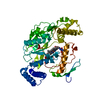

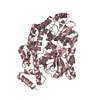
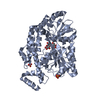

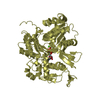
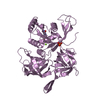

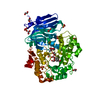
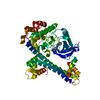
 PDBj
PDBj
